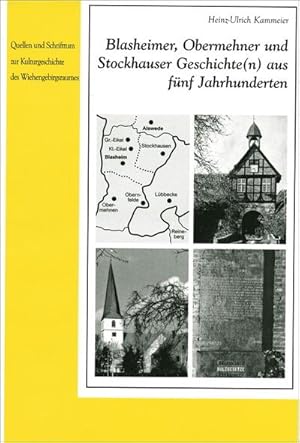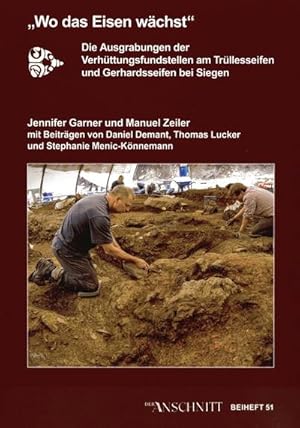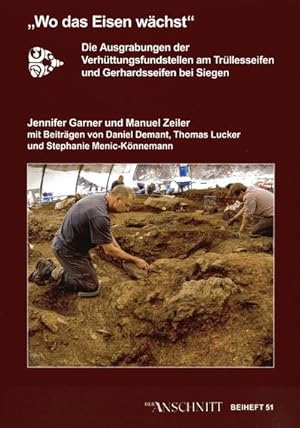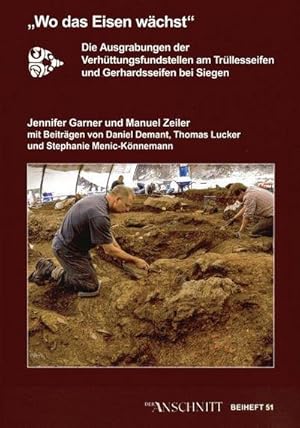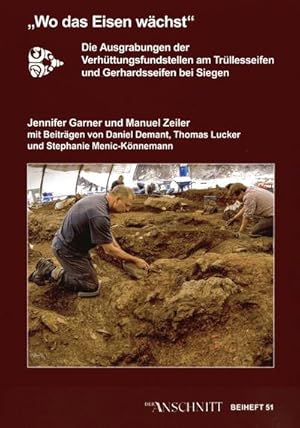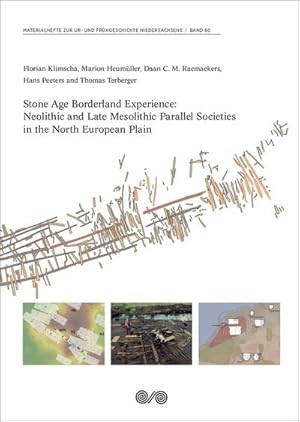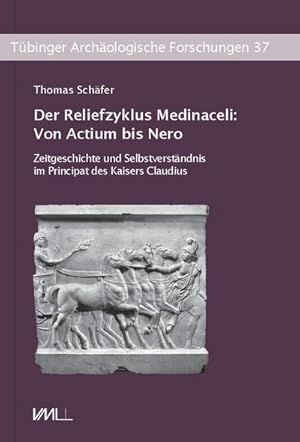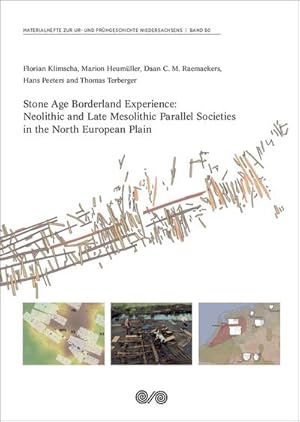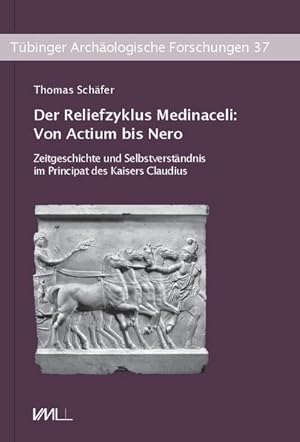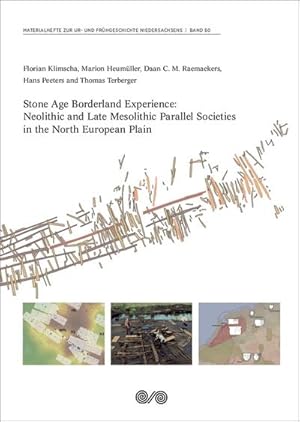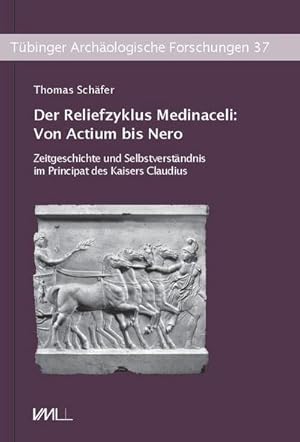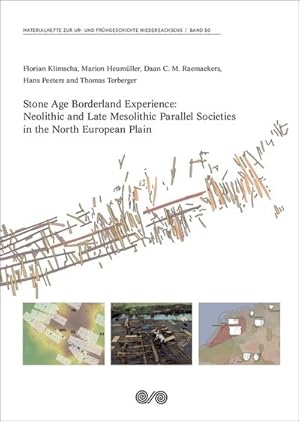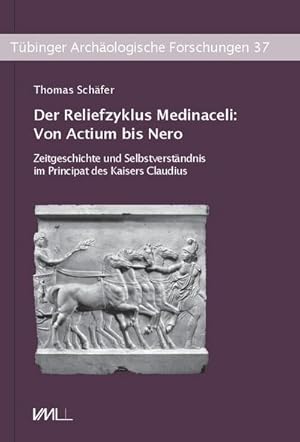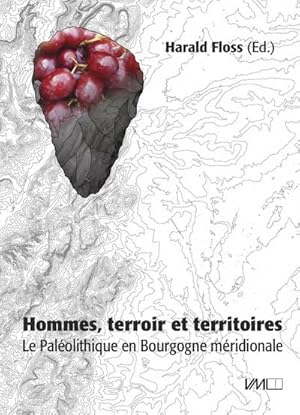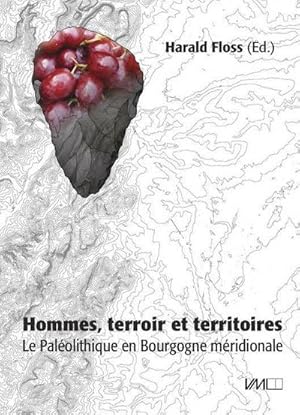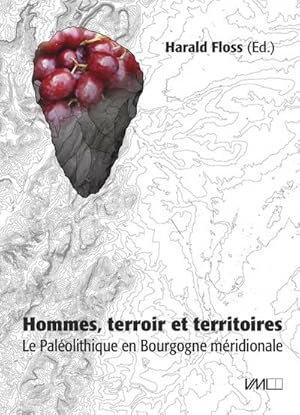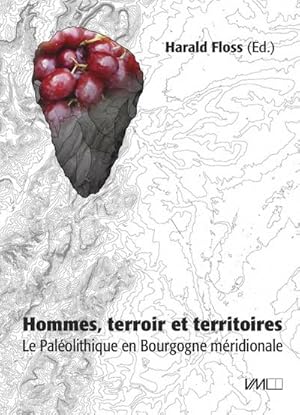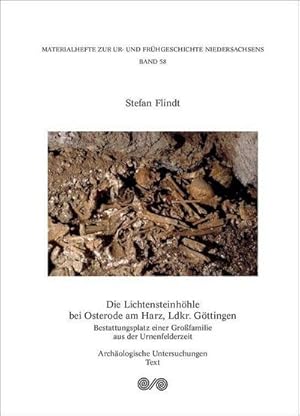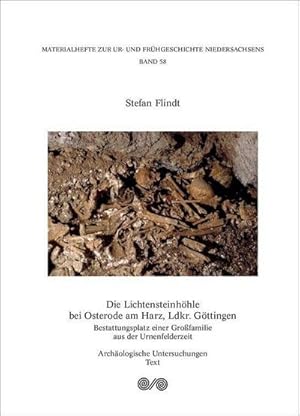vml verlag marie leidorf dez 2022 (32 risultati)
Tipo di articolo
- Tutti i tipi di prodotto
- Libri (32)
- Riviste e Giornali
- Fumetti
- Spartiti
- Arte, Stampe e Poster
- Fotografie
- Mappe
- Manoscritti e Collezionismo cartaceo
Condizioni
- Tutte
- Nuovi (32)
- Antichi o usati
Legatura
Ulteriori caratteristiche
- Prima ed.
- Copia autograf.
- Sovracoperta
- Con foto (32)
- Non Print on Demand (32)
Spedizione gratuita
- Spedizione gratuita negli USA
Paese del venditore
Valutazione venditore
-
Blasheimer, Obermehner und Stockhauser Geschichte(n) aus fünf Jahrhunderten
Editore: VML Verlag Marie Leidorf Dez 2022, 2022
ISBN 10: 3896469088ISBN 13: 9783896469083
Da: BuchWeltWeit Ludwig Meier e.K., Bergisch Gladbach, Germania
Libro
Taschenbuch. Condizione: Neu. Neuware -The occasion for publishing this 350-page volume is the 50th anniversary, on the 1st of January 2023, of the governmental reorganisation of North Rhine-Westphalia through which the municipality of Blasheim, after centuries of belonging to Preußisch Oldendorf, became a part of the city of Lübbecke. The author does not present a linear chronicle of Blasheim [first named in written sources in 969 A.D.] and the hamlets of Obermehnen and Stockhausen, but instead highlights selected aspects which have hitherto not been written about, or only briefly mentioned. Examples include 19th century alcohol misuse, the cantor and school reformer Schrader, the secession of the Selbststandige Evangelisch-Lutherische Kirche [Autonomus Evangelical-Lutheran Church] from the Prussian Union of Churches, the conflict between the NSDAP and Pastor Blankenstein, and Denazification. 364 pp. Deutsch.
-
Blasheimer, Obermehner und Stockhauser Geschichte(n) aus fünf Jahrhunderten
Editore: VML Verlag Marie Leidorf Dez 2022, 2022
ISBN 10: 3896469088ISBN 13: 9783896469083
Da: Rheinberg-Buch Andreas Meier eK, Bergisch Gladbach, Germania
Libro
Taschenbuch. Condizione: Neu. Neuware -The occasion for publishing this 350-page volume is the 50th anniversary, on the 1st of January 2023, of the governmental reorganisation of North Rhine-Westphalia through which the municipality of Blasheim, after centuries of belonging to Preußisch Oldendorf, became a part of the city of Lübbecke. The author does not present a linear chronicle of Blasheim [first named in written sources in 969 A.D.] and the hamlets of Obermehnen and Stockhausen, but instead highlights selected aspects which have hitherto not been written about, or only briefly mentioned. Examples include 19th century alcohol misuse, the cantor and school reformer Schrader, the secession of the Selbststandige Evangelisch-Lutherische Kirche [Autonomus Evangelical-Lutheran Church] from the Prussian Union of Churches, the conflict between the NSDAP and Pastor Blankenstein, and Denazification. 364 pp. Deutsch.
-
Blasheimer, Obermehner und Stockhauser Geschichte(n) aus fünf Jahrhunderten
Editore: VML Verlag Marie Leidorf Dez 2022, 2022
ISBN 10: 3896469088ISBN 13: 9783896469083
Da: Wegmann1855, Zwiesel, Germania
Libro
Taschenbuch. Condizione: Neu. Neuware -The occasion for publishing this 350-page volume is the 50th anniversary, on the 1st of January 2023, of the governmental reorganisation of North Rhine-Westphalia through which the municipality of Blasheim, after centuries of belonging to Preußisch Oldendorf, became a part of the city of Lübbecke. The author does not present a linear chronicle of Blasheim [first named in written sources in 969 A.D.] and the hamlets of Obermehnen and Stockhausen, but instead highlights selected aspects which have hitherto not been written about, or only briefly mentioned. Examples include 19th century alcohol misuse, the cantor and school reformer Schrader, the secession of the Selbststandige Evangelisch-Lutherische Kirche [Autonomus Evangelical-Lutheran Church] from the Prussian Union of Churches, the conflict between the NSDAP and Pastor Blankenstein, and Denazification.
-
Blasheimer, Obermehner und Stockhauser Geschichte(n) aus fünf Jahrhunderten
Editore: VML Verlag Marie Leidorf Dez 2022, 2022
ISBN 10: 3896469088ISBN 13: 9783896469083
Da: AHA-BUCH GmbH, Einbeck, Germania
Libro
Taschenbuch. Condizione: Neu. Neuware - The occasion for publishing this 350-page volume is the 50th anniversary, on the 1st of January 2023, of the governmental reorganisation of North Rhine-Westphalia through which the municipality of Blasheim, after centuries of belonging to Preußisch Oldendorf, became a part of the city of Lübbecke. The author does not present a linear chronicle of Blasheim [first named in written sources in 969 A.D.] and the hamlets of Obermehnen and Stockhausen, but instead highlights selected aspects which have hitherto not been written about, or only briefly mentioned. Examples include 19th century alcohol misuse, the cantor and school reformer Schrader, the secession of the Selbststandige Evangelisch-Lutherische Kirche [Autonomus Evangelical-Lutheran Church] from the Prussian Union of Churches, the conflict between the NSDAP and Pastor Blankenstein, and Denazification.
-
Der Alpen-Adria-Raum und das Imperium Romanum in der hohen Kaiserzeit
Editore: VML Verlag Marie Leidorf Dez 2022, 2022
ISBN 10: 386757085XISBN 13: 9783867570855
Da: BuchWeltWeit Ludwig Meier e.K., Bergisch Gladbach, Germania
Libro
Taschenbuch. Condizione: Neu. Neuware -This volume offers new insights from economic and social history, with a focus on the area between the Alps and the Adriatic. Alongside results from an analysis of written sources, it is in particular work with coinage and papyrological studies on papyri from Egypt that afford insights into daily life and economic life in the Roman Empire. In addition, new studies on diverse kinds of small finds and archaeological artefacts also provide information on questions of social and economic history. The contributions have been written by internationally renowned ancient scholars. Geographically, they cover the area between the Alps and the Adriatic, including Egypt and Asia Minor. They have therefore been written in German, English and Italian. 292 pp. Englisch, Deutsch, Italienisch.
-
Der Alpen-Adria-Raum und das Imperium Romanum in der hohen Kaiserzeit
Editore: VML Verlag Marie Leidorf Dez 2022, 2022
ISBN 10: 386757085XISBN 13: 9783867570855
Da: Rheinberg-Buch Andreas Meier eK, Bergisch Gladbach, Germania
Libro
Taschenbuch. Condizione: Neu. Neuware -This volume offers new insights from economic and social history, with a focus on the area between the Alps and the Adriatic. Alongside results from an analysis of written sources, it is in particular work with coinage and papyrological studies on papyri from Egypt that afford insights into daily life and economic life in the Roman Empire. In addition, new studies on diverse kinds of small finds and archaeological artefacts also provide information on questions of social and economic history. The contributions have been written by internationally renowned ancient scholars. Geographically, they cover the area between the Alps and the Adriatic, including Egypt and Asia Minor. They have therefore been written in German, English and Italian. 292 pp. Englisch, Deutsch, Italienisch.
-
Der Alpen-Adria-Raum und das Imperium Romanum in der hohen Kaiserzeit
Editore: VML Verlag Marie Leidorf Dez 2022, 2022
ISBN 10: 386757085XISBN 13: 9783867570855
Da: Wegmann1855, Zwiesel, Germania
Libro
Taschenbuch. Condizione: Neu. Neuware -This volume offers new insights from economic and social history, with a focus on the area between the Alps and the Adriatic. Alongside results from an analysis of written sources, it is in particular work with coinage and papyrological studies on papyri from Egypt that afford insights into daily life and economic life in the Roman Empire. In addition, new studies on diverse kinds of small finds and archaeological artefacts also provide information on questions of social and economic history. The contributions have been written by internationally renowned ancient scholars. Geographically, they cover the area between the Alps and the Adriatic, including Egypt and Asia Minor. They have therefore been written in German, English and Italian.
-
Studien zur Montanlandschaft Siegerland / "Wo das Eisen wächst"
Editore: VML Verlag Marie Leidorf Dez 2022, 2022
ISBN 10: 3867570450ISBN 13: 9783867570459
Da: BuchWeltWeit Ludwig Meier e.K., Bergisch Gladbach, Germania
Libro
Buch. Condizione: Neu. Neuware -The volume Anschnitt, Beiheft 51 collates the results of the research project 'The La Tène iron economy in the Siegerland region: interdisciplinary research on economic archaeology', funded by the German Research Foundation (DFG) and carried out between 2002 and 2019 by the Deutschen Bergbau-Museum Bochum in cooperation with LWL-Archäologie für Westfalen and the Ruhr-University Bochum. The focus of our research and the excavations we initiated were the smelting sites of 'Trüllesseifen' in Siegen-Oberschelden and 'Gerhardsseifen' in Siegen-Niederschelden. These two excavations are the most extensive archaeological interventions on iron smelting installations of the Iron Age and Medieval period to have been carried out in the prominent mining region of the Siegerland. The various authors provide detailed accounts of the results achieved at the two sites, reconstruct the iron smelting processes step by step, discuss the extent of Iron Age and medieval production and also address aspects of the conservation and presentation of the features through a protective structure and a heritage path at Gerhardsseifen. 244 pp. Deutsch.
-
Studien zur Montanlandschaft Siegerland / "Wo das Eisen wächst"
Editore: VML Verlag Marie Leidorf Dez 2022, 2022
ISBN 10: 3867570450ISBN 13: 9783867570459
Da: Rheinberg-Buch Andreas Meier eK, Bergisch Gladbach, Germania
Libro
Buch. Condizione: Neu. Neuware -The volume Anschnitt, Beiheft 51 collates the results of the research project 'The La Tène iron economy in the Siegerland region: interdisciplinary research on economic archaeology', funded by the German Research Foundation (DFG) and carried out between 2002 and 2019 by the Deutschen Bergbau-Museum Bochum in cooperation with LWL-Archäologie für Westfalen and the Ruhr-University Bochum. The focus of our research and the excavations we initiated were the smelting sites of 'Trüllesseifen' in Siegen-Oberschelden and 'Gerhardsseifen' in Siegen-Niederschelden. These two excavations are the most extensive archaeological interventions on iron smelting installations of the Iron Age and Medieval period to have been carried out in the prominent mining region of the Siegerland. The various authors provide detailed accounts of the results achieved at the two sites, reconstruct the iron smelting processes step by step, discuss the extent of Iron Age and medieval production and also address aspects of the conservation and presentation of the features through a protective structure and a heritage path at Gerhardsseifen. 244 pp. Deutsch.
-
Studien zur Montanlandschaft Siegerland / "Wo das Eisen wächst"
Editore: VML Verlag Marie Leidorf Dez 2022, 2022
ISBN 10: 3867570450ISBN 13: 9783867570459
Da: Wegmann1855, Zwiesel, Germania
Libro
Buch. Condizione: Neu. Neuware -The volume Anschnitt, Beiheft 51 collates the results of the research project 'The La Tène iron economy in the Siegerland region: interdisciplinary research on economic archaeology', funded by the German Research Foundation (DFG) and carried out between 2002 and 2019 by the Deutschen Bergbau-Museum Bochum in cooperation with LWL-Archäologie für Westfalen and the Ruhr-University Bochum. The focus of our research and the excavations we initiated were the smelting sites of 'Trüllesseifen' in Siegen-Oberschelden and 'Gerhardsseifen' in Siegen-Niederschelden. These two excavations are the most extensive archaeological interventions on iron smelting installations of the Iron Age and Medieval period to have been carried out in the prominent mining region of the Siegerland. The various authors provide detailed accounts of the results achieved at the two sites, reconstruct the iron smelting processes step by step, discuss the extent of Iron Age and medieval production and also address aspects of the conservation and presentation of the features through a protective structure and a heritage path at Gerhardsseifen.
-
Der Alpen-Adria-Raum und das Imperium Romanum in der hohen Kaiserzeit : Neue wirtschafts- und sozialgeschichtliche Fragestellungen
Editore: VML Verlag Marie Leidorf Dez 2022, 2022
ISBN 10: 386757085XISBN 13: 9783867570855
Da: AHA-BUCH GmbH, Einbeck, Germania
Libro
Taschenbuch. Condizione: Neu. Neuware - This volume offers new insights from economic and social history, with a focus on the area between the Alps and the Adriatic. Alongside results from an analysis of written sources, it is in particular work with coinage and papyrological studies on papyri from Egypt that afford insights into daily life and economic life in the Roman Empire. In addition, new studies on diverse kinds of small finds and archaeological artefacts also provide information on questions of social and economic history. The contributions have been written by internationally renowned ancient scholars. Geographically, they cover the area between the Alps and the Adriatic, including Egypt and Asia Minor. They have therefore been written in German, English and Italian.
-
Studien zur Montanlandschaft Siegerland / "Wo das Eisen wächst" : Die Ausgrabungen der Verhüttungsfundstellen am Trüllesseifen und Gerhardsseifen bei Siegen
Editore: VML Verlag Marie Leidorf Dez 2022, 2022
ISBN 10: 3867570450ISBN 13: 9783867570459
Da: AHA-BUCH GmbH, Einbeck, Germania
Libro
Buch. Condizione: Neu. Neuware - The volume Anschnitt, Beiheft 51 collates the results of the research project 'The La Tène iron economy in the Siegerland region: interdisciplinary research on economic archaeology', funded by the German Research Foundation (DFG) and carried out between 2002 and 2019 by the Deutschen Bergbau-Museum Bochum in cooperation with LWL-Archäologie für Westfalen and the Ruhr-University Bochum. The focus of our research and the excavations we initiated were the smelting sites of 'Trüllesseifen' in Siegen-Oberschelden and 'Gerhardsseifen' in Siegen-Niederschelden. These two excavations are the most extensive archaeological interventions on iron smelting installations of the Iron Age and Medieval period to have been carried out in the prominent mining region of the Siegerland. The various authors provide detailed accounts of the results achieved at the two sites, reconstruct the iron smelting processes step by step, discuss the extent of Iron Age and medieval production and also address aspects of the conservation and presentation of the features through a protective structure and a heritage path at Gerhardsseifen.
-
Wegen der Schönheit eurer Häfen .
Editore: VML Verlag Marie Leidorf Dez 2022, 2022
ISBN 10: 3867572771ISBN 13: 9783867572774
Da: BuchWeltWeit Ludwig Meier e.K., Bergisch Gladbach, Germania
Libro
Buch. Condizione: Neu. Neuware -Zahlreiche Hafenstädte reihten sich schon in der Antike rund um das Mittelmeer. Das mare nostrum, wie die Römer es nannten, war ein lebhaft genutzter Kommunikationsraum. Nicht nur Bedarfsgüter und Luxuswaren, Truppen, Ausrüstungsgegenstände und Reisende, gleich, aus welchem Anlass, fanden ihren Weg über das Meer. Auch aktuelle Nachrichten, philoso-phische Gedankengebäude, naturwissenschaftliche Erkenntnisse, kulturelle und technische Neuheiten wurden verbreitet. Und nicht zuletzt waren es Selbstdarstellungen, die weitergetra-gen wurden, Selbstdarstellungen von Personen, aber auch Selbstdarstellungen von Städten. Mit einer Art antikem 'city-branding' suchten Städte, ihre Position im römischen Imperium zu festigen oder zu verbessern. Hafenanlagen boten dabei in zweifacher Hinsicht Möglichkei-ten: Sie konnten als Kommunikationsraum, aber auch als optisches Aushängeschild, als 'façade maritime', dienen. In einer Gegenüberstellung von sieben Hafenstädten aus dem öst-lichen und dem westlichen Mittelmeerraum untersucht die vorliegende Arbeit, ob und in wel-chem Maß diese Möglichkeiten in der Städtekonkurrenz der frühen römischen Kaiserzeit ge-nutzt wurden.Already in antiquity, numerous harbour cities lined the Mediterranean Sea. The mare nos-trum, as it was called by the Romans, was a dynamic space for communication. Not only did consumer and luxury goods find their way across the sea but also troops, equipment, and trav-elers, and for a variety of reasons. The latest news, philosophical constructs, scientific find-ings, as well as cultural and technical innovations also spread in this way. And last but not least, self-presentations were transmitted - of both persons and cities. In a kind of 'city brand-ing,' cities in the classical Mediterranean tried to consolidate or improve their status in the Roman Empire. Port facilities offered opportunities to cities in two respects: they could serve as a space for communication as well as a visual showpiece, a 'façade maritime.' In a juxta-position of seven harbour cities of the Eastern and Western Mediterranean, this dissertation investigates whether and to what degree these opportunities were used by cities to compete for status in the Early Roman Empire. 551 pp. Deutsch.
-
Wegen der Schönheit eurer Häfen .
Editore: VML Verlag Marie Leidorf Dez 2022, 2022
ISBN 10: 3867572771ISBN 13: 9783867572774
Da: Rheinberg-Buch Andreas Meier eK, Bergisch Gladbach, Germania
Libro
Buch. Condizione: Neu. Neuware -Zahlreiche Hafenstädte reihten sich schon in der Antike rund um das Mittelmeer. Das mare nostrum, wie die Römer es nannten, war ein lebhaft genutzter Kommunikationsraum. Nicht nur Bedarfsgüter und Luxuswaren, Truppen, Ausrüstungsgegenstände und Reisende, gleich, aus welchem Anlass, fanden ihren Weg über das Meer. Auch aktuelle Nachrichten, philoso-phische Gedankengebäude, naturwissenschaftliche Erkenntnisse, kulturelle und technische Neuheiten wurden verbreitet. Und nicht zuletzt waren es Selbstdarstellungen, die weitergetra-gen wurden, Selbstdarstellungen von Personen, aber auch Selbstdarstellungen von Städten. Mit einer Art antikem 'city-branding' suchten Städte, ihre Position im römischen Imperium zu festigen oder zu verbessern. Hafenanlagen boten dabei in zweifacher Hinsicht Möglichkei-ten: Sie konnten als Kommunikationsraum, aber auch als optisches Aushängeschild, als 'façade maritime', dienen. In einer Gegenüberstellung von sieben Hafenstädten aus dem öst-lichen und dem westlichen Mittelmeerraum untersucht die vorliegende Arbeit, ob und in wel-chem Maß diese Möglichkeiten in der Städtekonkurrenz der frühen römischen Kaiserzeit ge-nutzt wurden.Already in antiquity, numerous harbour cities lined the Mediterranean Sea. The mare nos-trum, as it was called by the Romans, was a dynamic space for communication. Not only did consumer and luxury goods find their way across the sea but also troops, equipment, and trav-elers, and for a variety of reasons. The latest news, philosophical constructs, scientific find-ings, as well as cultural and technical innovations also spread in this way. And last but not least, self-presentations were transmitted - of both persons and cities. In a kind of 'city brand-ing,' cities in the classical Mediterranean tried to consolidate or improve their status in the Roman Empire. Port facilities offered opportunities to cities in two respects: they could serve as a space for communication as well as a visual showpiece, a 'façade maritime.' In a juxta-position of seven harbour cities of the Eastern and Western Mediterranean, this dissertation investigates whether and to what degree these opportunities were used by cities to compete for status in the Early Roman Empire. 551 pp. Deutsch.
-
Wegen der Schönheit eurer Häfen .
Editore: VML Verlag Marie Leidorf Dez 2022, 2022
ISBN 10: 3867572771ISBN 13: 9783867572774
Da: Wegmann1855, Zwiesel, Germania
Libro
Buch. Condizione: Neu. Neuware -Zahlreiche Hafenstädte reihten sich schon in der Antike rund um das Mittelmeer. Das mare nostrum, wie die Römer es nannten, war ein lebhaft genutzter Kommunikationsraum. Nicht nur Bedarfsgüter und Luxuswaren, Truppen, Ausrüstungsgegenstände und Reisende, gleich, aus welchem Anlass, fanden ihren Weg über das Meer. Auch aktuelle Nachrichten, philoso-phische Gedankengebäude, naturwissenschaftliche Erkenntnisse, kulturelle und technische Neuheiten wurden verbreitet. Und nicht zuletzt waren es Selbstdarstellungen, die weitergetra-gen wurden, Selbstdarstellungen von Personen, aber auch Selbstdarstellungen von Städten. Mit einer Art antikem 'city-branding' suchten Städte, ihre Position im römischen Imperium zu festigen oder zu verbessern. Hafenanlagen boten dabei in zweifacher Hinsicht Möglichkei-ten: Sie konnten als Kommunikationsraum, aber auch als optisches Aushängeschild, als 'façade maritime', dienen. In einer Gegenüberstellung von sieben Hafenstädten aus dem öst-lichen und dem westlichen Mittelmeerraum untersucht die vorliegende Arbeit, ob und in wel-chem Maß diese Möglichkeiten in der Städtekonkurrenz der frühen römischen Kaiserzeit ge-nutzt wurden.Already in antiquity, numerous harbour cities lined the Mediterranean Sea. The mare nos-trum, as it was called by the Romans, was a dynamic space for communication. Not only did consumer and luxury goods find their way across the sea but also troops, equipment, and trav-elers, and for a variety of reasons. The latest news, philosophical constructs, scientific find-ings, as well as cultural and technical innovations also spread in this way. And last but not least, self-presentations were transmitted - of both persons and cities. In a kind of 'city brand-ing,' cities in the classical Mediterranean tried to consolidate or improve their status in the Roman Empire. Port facilities offered opportunities to cities in two respects: they could serve as a space for communication as well as a visual showpiece, a 'façade maritime.' In a juxta-position of seven harbour cities of the Eastern and Western Mediterranean, this dissertation investigates whether and to what degree these opportunities were used by cities to compete for status in the Early Roman Empire.
-
Stone Age Borderland Experience:
Editore: VML Verlag Marie Leidorf Dez 2022, 2022
ISBN 10: 3896469533ISBN 13: 9783896469533
Da: Rheinberg-Buch Andreas Meier eK, Bergisch Gladbach, Germania
Libro
Buch. Condizione: Neu. Neuware -These conference proceedings contain a foreword by the editors, 26 papers of an international conference at Niedersächsisches Landesmuseum Hannover from 20th to 22nd May 2019, and a list of authors. The papers are divided into chapters on 'Grenzgänger, traders and the last hunter-gatherers of the North European Plain' [16 papers on the interaction between Mesolithic and Neolithic communities] and on 'Changing worlds - The Spread of the Neolithic Way of Life in the North' [10 papers on more general aspects of the Neolithisation]. The contributions deal with Mesolithic pottery, sites of the Swifterbant and Linear Pottery Cultures, palaeobotanical data, lipid residue analyses, the initial Neolithisation of the lowlands, Neolithic hoards, foraging in a changing landscape, intercultural interaction and impacts, paths of innovation, long distance contacts, mobility and migration, multiculturalism, the Rhine-Meuse Delta [Doggerland] from 5,500-2,500 B.C., the earliest metallurgy, a biological view of Neolithisation, the transformation 4,750-3,800 B.C., technical innovations, the Schöningen Group, Younger Neolithic causewayed enclosures, plant economy, and a Neolithic landscape preserved in a bog. 472 pp. Englisch.
-
Der Reliefzyklus Medinaceli: Von Actium bis Nero
Editore: VML Verlag Marie Leidorf Dez 2022, 2022
ISBN 10: 3896468685ISBN 13: 9783896468680
Da: Rheinberg-Buch Andreas Meier eK, Bergisch Gladbach, Germania
Libro
Buch. Condizione: Neu. Neuware -This is the first exhaustive publication of the Medinaceli relief cycle. The 12 preserved reliefs and fragments, today housed in Córdoba, Seville and Budapest, can be grouped into three friezes on the basis of the depiction and direction of movement. These friezes adorned an unknown building in southern Italy, probably dedicated to the imperial cult. The stylistic and historical contextualisation suggests a date in Claudian times. Frieze B therefore shows the triumph of Claudius over Britain as a climax of imperial representation. In contrast, frieze C depicts the iconographically rarely attested pompa circensis, as shown by the tensa of Divus Augustus. Particularly in Claudian times, such a procession bears a strong dynastic character, given the presentation of the statues of divinized and other important persons, of which only Pompey as exemplary princeps and great naval victor is preserved. In addition, and borrowing from the famous Ravenna relief, Antonius - the second grandfather of Claudius - and Divus Iulius - who was the first to attempt a conquest of Britain - are shown alongside Divus Augustus and Diva Iulia. The occasion for this pompa circensis, celebrated in a special manner, was most likely the procession in A.D. 51, extensively described in Tacitus, during which Nero and Britannicus were promoted as Claudius' successors. Frieze A shows the naval battle of Actium fought between Claudius' grandfathers, Octavian and Antonius, which was poetically refracted in Virgil's 5th book of the Aeneis and which calls to mind the principate's origin myth under the protection of Apollo. 526 pp. Deutsch.
-
"Wegen der Schönheit eurer Häfen ." : Hafenanlagen der frühen Kaiserzeit - Spiegel städtischer Selbstdarstellung?
Editore: VML Verlag Marie Leidorf Dez 2022, 2022
ISBN 10: 3867572771ISBN 13: 9783867572774
Da: AHA-BUCH GmbH, Einbeck, Germania
Libro
Buch. Condizione: Neu. Neuware - Zahlreiche Hafenstädte reihten sich schon in der Antike rund um das Mittelmeer. Das mare nostrum, wie die Römer es nannten, war ein lebhaft genutzter Kommunikationsraum. Nicht nur Bedarfsgüter und Luxuswaren, Truppen, Ausrüstungsgegenstände und Reisende, gleich, aus welchem Anlass, fanden ihren Weg über das Meer. Auch aktuelle Nachrichten, philoso-phische Gedankengebäude, naturwissenschaftliche Erkenntnisse, kulturelle und technische Neuheiten wurden verbreitet. Und nicht zuletzt waren es Selbstdarstellungen, die weitergetra-gen wurden, Selbstdarstellungen von Personen, aber auch Selbstdarstellungen von Städten. Mit einer Art antikem 'city-branding' suchten Städte, ihre Position im römischen Imperium zu festigen oder zu verbessern. Hafenanlagen boten dabei in zweifacher Hinsicht Möglichkei-ten: Sie konnten als Kommunikationsraum, aber auch als optisches Aushängeschild, als 'façade maritime', dienen. In einer Gegenüberstellung von sieben Hafenstädten aus dem öst-lichen und dem westlichen Mittelmeerraum untersucht die vorliegende Arbeit, ob und in wel-chem Maß diese Möglichkeiten in der Städtekonkurrenz der frühen römischen Kaiserzeit ge-nutzt wurden.Already in antiquity, numerous harbour cities lined the Mediterranean Sea. The mare nos-trum, as it was called by the Romans, was a dynamic space for communication. Not only did consumer and luxury goods find their way across the sea but also troops, equipment, and trav-elers, and for a variety of reasons. The latest news, philosophical constructs, scientific find-ings, as well as cultural and technical innovations also spread in this way. And last but not least, self-presentations were transmitted - of both persons and cities. In a kind of 'city brand-ing,' cities in the classical Mediterranean tried to consolidate or improve their status in the Roman Empire. Port facilities offered opportunities to cities in two respects: they could serve as a space for communication as well as a visual showpiece, a 'façade maritime.' In a juxta-position of seven harbour cities of the Eastern and Western Mediterranean, this dissertation investigates whether and to what degree these opportunities were used by cities to compete for status in the Early Roman Empire.
-
Stone Age Borderland Experience:
Editore: VML Verlag Marie Leidorf Dez 2022, 2022
ISBN 10: 3896469533ISBN 13: 9783896469533
Da: BuchWeltWeit Ludwig Meier e.K., Bergisch Gladbach, Germania
Libro
Buch. Condizione: Neu. Neuware -These conference proceedings contain a foreword by the editors, 26 papers of an international conference at Niedersächsisches Landesmuseum Hannover from 20th to 22nd May 2019, and a list of authors. The papers are divided into chapters on 'Grenzgänger, traders and the last hunter-gatherers of the North European Plain' [16 papers on the interaction between Mesolithic and Neolithic communities] and on 'Changing worlds - The Spread of the Neolithic Way of Life in the North' [10 papers on more general aspects of the Neolithisation]. The contributions deal with Mesolithic pottery, sites of the Swifterbant and Linear Pottery Cultures, palaeobotanical data, lipid residue analyses, the initial Neolithisation of the lowlands, Neolithic hoards, foraging in a changing landscape, intercultural interaction and impacts, paths of innovation, long distance contacts, mobility and migration, multiculturalism, the Rhine-Meuse Delta [Doggerland] from 5,500-2,500 B.C., the earliest metallurgy, a biological view of Neolithisation, the transformation 4,750-3,800 B.C., technical innovations, the Schöningen Group, Younger Neolithic causewayed enclosures, plant economy, and a Neolithic landscape preserved in a bog. 472 pp. Englisch.
-
Der Reliefzyklus Medinaceli: Von Actium bis Nero
Editore: VML Verlag Marie Leidorf Dez 2022, 2022
ISBN 10: 3896468685ISBN 13: 9783896468680
Da: BuchWeltWeit Ludwig Meier e.K., Bergisch Gladbach, Germania
Libro
Buch. Condizione: Neu. Neuware -This is the first exhaustive publication of the Medinaceli relief cycle. The 12 preserved reliefs and fragments, today housed in Córdoba, Seville and Budapest, can be grouped into three friezes on the basis of the depiction and direction of movement. These friezes adorned an unknown building in southern Italy, probably dedicated to the imperial cult. The stylistic and historical contextualisation suggests a date in Claudian times. Frieze B therefore shows the triumph of Claudius over Britain as a climax of imperial representation. In contrast, frieze C depicts the iconographically rarely attested pompa circensis, as shown by the tensa of Divus Augustus. Particularly in Claudian times, such a procession bears a strong dynastic character, given the presentation of the statues of divinized and other important persons, of which only Pompey as exemplary princeps and great naval victor is preserved. In addition, and borrowing from the famous Ravenna relief, Antonius - the second grandfather of Claudius - and Divus Iulius - who was the first to attempt a conquest of Britain - are shown alongside Divus Augustus and Diva Iulia. The occasion for this pompa circensis, celebrated in a special manner, was most likely the procession in A.D. 51, extensively described in Tacitus, during which Nero and Britannicus were promoted as Claudius' successors. Frieze A shows the naval battle of Actium fought between Claudius' grandfathers, Octavian and Antonius, which was poetically refracted in Virgil's 5th book of the Aeneis and which calls to mind the principate's origin myth under the protection of Apollo. 526 pp. Deutsch.
-
Stone Age Borderland Experience:
Editore: VML Verlag Marie Leidorf Dez 2022, 2022
ISBN 10: 3896469533ISBN 13: 9783896469533
Da: Wegmann1855, Zwiesel, Germania
Libro
Buch. Condizione: Neu. Neuware -These conference proceedings contain a foreword by the editors, 26 papers of an international conference at Niedersächsisches Landesmuseum Hannover from 20th to 22nd May 2019, and a list of authors. The papers are divided into chapters on 'Grenzgänger, traders and the last hunter-gatherers of the North European Plain' [16 papers on the interaction between Mesolithic and Neolithic communities] and on 'Changing worlds - The Spread of the Neolithic Way of Life in the North' [10 papers on more general aspects of the Neolithisation]. The contributions deal with Mesolithic pottery, sites of the Swifterbant and Linear Pottery Cultures, palaeobotanical data, lipid residue analyses, the initial Neolithisation of the lowlands, Neolithic hoards, foraging in a changing landscape, intercultural interaction and impacts, paths of innovation, long distance contacts, mobility and migration, multiculturalism, the Rhine-Meuse Delta [Doggerland] from 5,500-2,500 B.C., the earliest metallurgy, a biological view of Neolithisation, the transformation 4,750-3,800 B.C., technical innovations, the Schöningen Group, Younger Neolithic causewayed enclosures, plant economy, and a Neolithic landscape preserved in a bog.
-
Der Reliefzyklus Medinaceli: Von Actium bis Nero
Editore: VML Verlag Marie Leidorf Dez 2022, 2022
ISBN 10: 3896468685ISBN 13: 9783896468680
Da: Wegmann1855, Zwiesel, Germania
Libro
Buch. Condizione: Neu. Neuware -This is the first exhaustive publication of the Medinaceli relief cycle. The 12 preserved reliefs and fragments, today housed in Córdoba, Seville and Budapest, can be grouped into three friezes on the basis of the depiction and direction of movement. These friezes adorned an unknown building in southern Italy, probably dedicated to the imperial cult. The stylistic and historical contextualisation suggests a date in Claudian times. Frieze B therefore shows the triumph of Claudius over Britain as a climax of imperial representation. In contrast, frieze C depicts the iconographically rarely attested pompa circensis, as shown by the tensa of Divus Augustus. Particularly in Claudian times, such a procession bears a strong dynastic character, given the presentation of the statues of divinized and other important persons, of which only Pompey as exemplary princeps and great naval victor is preserved. In addition, and borrowing from the famous Ravenna relief, Antonius - the second grandfather of Claudius - and Divus Iulius - who was the first to attempt a conquest of Britain - are shown alongside Divus Augustus and Diva Iulia. The occasion for this pompa circensis, celebrated in a special manner, was most likely the procession in A.D. 51, extensively described in Tacitus, during which Nero and Britannicus were promoted as Claudius' successors. Frieze A shows the naval battle of Actium fought between Claudius' grandfathers, Octavian and Antonius, which was poetically refracted in Virgil's 5th book of the Aeneis and which calls to mind the principate's origin myth under the protection of Apollo.
-
Stone Age Borderland Experience: : Neolithic and Late Mesolithic Parallel Societies in the North European Plain
Editore: VML Verlag Marie Leidorf Dez 2022, 2022
ISBN 10: 3896469533ISBN 13: 9783896469533
Da: AHA-BUCH GmbH, Einbeck, Germania
Libro
Buch. Condizione: Neu. Neuware - These conference proceedings contain a foreword by the editors, 26 papers of an international conference at Niedersächsisches Landesmuseum Hannover from 20th to 22nd May 2019, and a list of authors. The papers are divided into chapters on 'Grenzgänger, traders and the last hunter-gatherers of the North European Plain' [16 papers on the interaction between Mesolithic and Neolithic communities] and on 'Changing worlds - The Spread of the Neolithic Way of Life in the North' [10 papers on more general aspects of the Neolithisation]. The contributions deal with Mesolithic pottery, sites of the Swifterbant and Linear Pottery Cultures, palaeobotanical data, lipid residue analyses, the initial Neolithisation of the lowlands, Neolithic hoards, foraging in a changing landscape, intercultural interaction and impacts, paths of innovation, long distance contacts, mobility and migration, multiculturalism, the Rhine-Meuse Delta [Doggerland] from 5,500-2,500 B.C., the earliest metallurgy, a biological view of Neolithisation, the transformation 4,750-3,800 B.C., technical innovations, the Schöningen Group, Younger Neolithic causewayed enclosures, plant economy, and a Neolithic landscape preserved in a bog.
-
Der Reliefzyklus Medinaceli: Von Actium bis Nero : Zeitgeschichte und Selbstverständnis im Principat des Kaisers Claudius
Editore: VML Verlag Marie Leidorf Dez 2022, 2022
ISBN 10: 3896468685ISBN 13: 9783896468680
Da: AHA-BUCH GmbH, Einbeck, Germania
Libro
Buch. Condizione: Neu. Neuware - This is the first exhaustive publication of the Medinaceli relief cycle. The 12 preserved reliefs and fragments, today housed in Córdoba, Seville and Budapest, can be grouped into three friezes on the basis of the depiction and direction of movement. These friezes adorned an unknown building in southern Italy, probably dedicated to the imperial cult. The stylistic and historical contextualisation suggests a date in Claudian times. Frieze B therefore shows the triumph of Claudius over Britain as a climax of imperial representation. In contrast, frieze C depicts the iconographically rarely attested pompa circensis, as shown by the tensa of Divus Augustus. Particularly in Claudian times, such a procession bears a strong dynastic character, given the presentation of the statues of divinized and other important persons, of which only Pompey as exemplary princeps and great naval victor is preserved. In addition, and borrowing from the famous Ravenna relief, Antonius - the second grandfather of Claudius - and Divus Iulius - who was the first to attempt a conquest of Britain - are shown alongside Divus Augustus and Diva Iulia. The occasion for this pompa circensis, celebrated in a special manner, was most likely the procession in A.D. 51, extensively described in Tacitus, during which Nero and Britannicus were promoted as Claudius' successors. Frieze A shows the naval battle of Actium fought between Claudius' grandfathers, Octavian and Antonius, which was poetically refracted in Virgil's 5th book of the Aeneis and which calls to mind the principate's origin myth under the protection of Apollo.
-
Hommes, terroir et territoires
Editore: VML Verlag Marie Leidorf Dez 2022, 2022
ISBN 10: 3867570981ISBN 13: 9783867570985
Da: BuchWeltWeit Ludwig Meier e.K., Bergisch Gladbach, Germania
Libro
Taschenbuch. Condizione: Neu. Neuware -La Bourgogne méridionale, située entre Dijon et Lyon, compte parmi les régions paléolithiques les plus importantes de France depuis les travaux pionniers du XIXe siècle vers la roche de Solutré. Cependant, la région située entre la Saône et la Loire est longtemps restée dans l'ombre d'autres espaces, comme la Dordogne ou l'Ardèche. Sous la direction d'Harald Floss, la Bourgogne du Sud a pu devenir, au cours des 25 dernières années, une région de référence du Paléolithique européen grâce à des recherches continues. Avec plus de 50 contributions de chercheurs de renommée internationale, le présent ouvrage de 860 pages richement illustré est un jalon indispensable de la recherche paléolithique dans l'est de la France et l'expression centrale de ces longues années d'études. Des contributions de résultats importants provenant de régions voisines, comme le Jura, la Haute-Saône ou le Beaujolais, complètent l'éventail des travaux. D'un point de vue chronologique, la phase de transition entre les derniers Néandertaliens et le premier Homo sapiens à venir en Europe est au premier plan de l'intérêt. Située sur l'axe central des fleuves Rhin, Saône et Rhône qui traversent l'Europe, la zone de travail se trouve à la charnière entre l'Europe centrale, méridionale et occidentale. La région se caractérise par une densité inhabituelle d'ossements de Néandertaliens, qui sont analysés dans cette publication de manière aussi détaillée que la question de la transition immédiate entre le Paléolithique moyen et le Paléolithique supérieur, avec l'étude du MtA, du Châtelperronien et de l'Aurignacien. Outre des contributions sur la géologie, la géomorphologie, le paléo-environnement et la pertinence de la cartographie des sites, un point fort de l'ouvrage est consacré aux études lithiques, les analyses de matières premières intégrant la région dans un réseau plus large. Le Gravettien présente un ensemble de sites particulièrement dense, où nous pouvons reconnaître un modèle systématique d'utilisation de l'espace. Enfin, les expressions symboliques avec la parure et l'art constituent un point fort particulier. Les découvertes de l'art pariétal paléolithique à Rully et de l'exemplaire unique d'une cuillère en ivoire décorée de Saint-Martin-sous-Montaigu, dans la tradition technologique des célèbres figurines en ivoire du Jura souabe, sont par exemple d'une importance suprarégionale. Dans sa systématique méthodique, la présente publication sert sans aucun doute de guide pour montrer comment des régions moins bien étudiées peuvent entrer au centre d'intérêt. 863 pp. Englisch, Französisch.
-
Hommes, terroir et territoires
Editore: VML Verlag Marie Leidorf Dez 2022, 2022
ISBN 10: 3867570981ISBN 13: 9783867570985
Da: Rheinberg-Buch Andreas Meier eK, Bergisch Gladbach, Germania
Libro
Taschenbuch. Condizione: Neu. Neuware -La Bourgogne méridionale, située entre Dijon et Lyon, compte parmi les régions paléolithiques les plus importantes de France depuis les travaux pionniers du XIXe siècle vers la roche de Solutré. Cependant, la région située entre la Saône et la Loire est longtemps restée dans l'ombre d'autres espaces, comme la Dordogne ou l'Ardèche. Sous la direction d'Harald Floss, la Bourgogne du Sud a pu devenir, au cours des 25 dernières années, une région de référence du Paléolithique européen grâce à des recherches continues. Avec plus de 50 contributions de chercheurs de renommée internationale, le présent ouvrage de 860 pages richement illustré est un jalon indispensable de la recherche paléolithique dans l'est de la France et l'expression centrale de ces longues années d'études. Des contributions de résultats importants provenant de régions voisines, comme le Jura, la Haute-Saône ou le Beaujolais, complètent l'éventail des travaux. D'un point de vue chronologique, la phase de transition entre les derniers Néandertaliens et le premier Homo sapiens à venir en Europe est au premier plan de l'intérêt. Située sur l'axe central des fleuves Rhin, Saône et Rhône qui traversent l'Europe, la zone de travail se trouve à la charnière entre l'Europe centrale, méridionale et occidentale. La région se caractérise par une densité inhabituelle d'ossements de Néandertaliens, qui sont analysés dans cette publication de manière aussi détaillée que la question de la transition immédiate entre le Paléolithique moyen et le Paléolithique supérieur, avec l'étude du MtA, du Châtelperronien et de l'Aurignacien. Outre des contributions sur la géologie, la géomorphologie, le paléo-environnement et la pertinence de la cartographie des sites, un point fort de l'ouvrage est consacré aux études lithiques, les analyses de matières premières intégrant la région dans un réseau plus large. Le Gravettien présente un ensemble de sites particulièrement dense, où nous pouvons reconnaître un modèle systématique d'utilisation de l'espace. Enfin, les expressions symboliques avec la parure et l'art constituent un point fort particulier. Les découvertes de l'art pariétal paléolithique à Rully et de l'exemplaire unique d'une cuillère en ivoire décorée de Saint-Martin-sous-Montaigu, dans la tradition technologique des célèbres figurines en ivoire du Jura souabe, sont par exemple d'une importance suprarégionale. Dans sa systématique méthodique, la présente publication sert sans aucun doute de guide pour montrer comment des régions moins bien étudiées peuvent entrer au centre d'intérêt. 863 pp. Englisch, Französisch.
-
Hommes, terroir et territoires
Editore: VML Verlag Marie Leidorf Dez 2022, 2022
ISBN 10: 3867570981ISBN 13: 9783867570985
Da: Wegmann1855, Zwiesel, Germania
Libro
Buch. Condizione: Neu. Neuware -La Bourgogne méridionale, située entre Dijon et Lyon, compte parmi les régions paléolithiques les plus importantes de France depuis les travaux pionniers du XIXe siècle vers la roche de Solutré. Cependant, la région située entre la Saône et la Loire est longtemps restée dans l'ombre d'autres espaces, comme la Dordogne ou l'Ardèche. Sous la direction d'Harald Floss, la Bourgogne du Sud a pu devenir, au cours des 25 dernières années, une région de référence du Paléolithique européen grâce à des recherches continues. Avec plus de 50 contributions de chercheurs de renommée internationale, le présent ouvrage de 860 pages richement illustré est un jalon indispensable de la recherche paléolithique dans l'est de la France et l'expression centrale de ces longues années d'études. Des contributions de résultats importants provenant de régions voisines, comme le Jura, la Haute-Saône ou le Beaujolais, complètent l'éventail des travaux. D'un point de vue chronologique, la phase de transition entre les derniers Néandertaliens et le premier Homo sapiens à venir en Europe est au premier plan de l'intérêt. Située sur l'axe central des fleuves Rhin, Saône et Rhône qui traversent l'Europe, la zone de travail se trouve à la charnière entre l'Europe centrale, méridionale et occidentale. La région se caractérise par une densité inhabituelle d'ossements de Néandertaliens, qui sont analysés dans cette publication de manière aussi détaillée que la question de la transition immédiate entre le Paléolithique moyen et le Paléolithique supérieur, avec l'étude du MtA, du Châtelperronien et de l'Aurignacien. Outre des contributions sur la géologie, la géomorphologie, le paléo-environnement et la pertinence de la cartographie des sites, un point fort de l'ouvrage est consacré aux études lithiques, les analyses de matières premières intégrant la région dans un réseau plus large. Le Gravettien présente un ensemble de sites particulièrement dense, où nous pouvons reconnaître un modèle systématique d'utilisation de l'espace. Enfin, les expressions symboliques avec la parure et l'art constituent un point fort particulier. Les découvertes de l'art pariétal paléolithique à Rully et de l'exemplaire unique d'une cuillère en ivoire décorée de Saint-Martin-sous-Montaigu, dans la tradition technologique des célèbres figurines en ivoire du Jura souabe, sont par exemple d'une importance suprarégionale. Dans sa systématique méthodique, la présente publication sert sans aucun doute de guide pour montrer comment des régions moins bien étudiées peuvent entrer au centre d'intérêt. 863 pp. Englisch, Französisch.
-
Hommes, terroir et territoires : Le Paléolithique en Bourgogne méridionale
Editore: VML Verlag Marie Leidorf Dez 2022, 2022
ISBN 10: 3867570981ISBN 13: 9783867570985
Da: AHA-BUCH GmbH, Einbeck, Germania
Libro
Taschenbuch. Condizione: Neu. Neuware - La Bourgogne méridionale, située entre Dijon et Lyon, compte parmi les régions paléolithiques les plus importantes de France depuis les travaux pionniers du XIXe siècle vers la roche de Solutré. Cependant, la région située entre la Saône et la Loire est longtemps restée dans l'ombre d'autres espaces, comme la Dordogne ou l'Ardèche. Sous la direction d'Harald Floss, la Bourgogne du Sud a pu devenir, au cours des 25 dernières années, une région de référence du Paléolithique européen grâce à des recherches continues. Avec plus de 50 contributions de chercheurs de renommée internationale, le présent ouvrage de 860 pages richement illustré est un jalon indispensable de la recherche paléolithique dans l'est de la France et l'expression centrale de ces longues années d'études. Des contributions de résultats importants provenant de régions voisines, comme le Jura, la Haute-Saône ou le Beaujolais, complètent l'éventail des travaux. D'un point de vue chronologique, la phase de transition entre les derniers Néandertaliens et le premier Homo sapiens à venir en Europe est au premier plan de l'intérêt. Située sur l'axe central des fleuves Rhin, Saône et Rhône qui traversent l'Europe, la zone de travail se trouve à la charnière entre l'Europe centrale, méridionale et occidentale. La région se caractérise par une densité inhabituelle d'ossements de Néandertaliens, qui sont analysés dans cette publication de manière aussi détaillée que la question de la transition immédiate entre le Paléolithique moyen et le Paléolithique supérieur, avec l'étude du MtA, du Châtelperronien et de l'Aurignacien. Outre des contributions sur la géologie, la géomorphologie, le paléo-environnement et la pertinence de la cartographie des sites, un point fort de l'ouvrage est consacré aux études lithiques, les analyses de matières premières intégrant la région dans un réseau plus large. Le Gravettien présente un ensemble de sites particulièrement dense, où nous pouvons reconnaître un modèle systématique d'utilisation de l'espace. Enfin, les expressions symboliques avec la parure et l'art constituent un point fort particulier. Les découvertes de l'art pariétal paléolithique à Rully et de l'exemplaire unique d'une cuillère en ivoire décorée de Saint-Martin-sous-Montaigu, dans la tradition technologique des célèbres figurines en ivoire du Jura souabe, sont par exemple d'une importance suprarégionale. Dans sa systématique méthodique, la présente publication sert sans aucun doute de guide pour montrer comment des régions moins bien étudiées peuvent entrer au centre d'intérêt.
-
Die Lichtensteinhöhle bei Osterode am Harz, Ldkr. Göttingen
Editore: VML Verlag Marie Leidorf Dez 2022, 2022
ISBN 10: 3896468502ISBN 13: 9783896468505
Da: BuchWeltWeit Ludwig Meier e.K., Bergisch Gladbach, Germania
Libro
Taschenbuch. Condizione: Neu. Neuware -This volume of the Materialhefte zur Ur- und Frühgeschichte presents the results of a long-running archaeological excavation in the Lichtenstein cave near Osterode am Harz [Germany, state of Lower Saxony, district of Göttingen]. Based on the extensive finds assemblage, which amongst others comprises numerous remains of pottery vessels and more than 200 bronze objects, the site can be dated to the 10th-9th centuries B.C. and thereby to a younger part of the Urnfield Period. Particularly important for Urnfield Period research is the assemblage of more than 4.000 unburnt human bones, found in the cave without anatomical connection. Based on extensive aDNA analysis, these skeletal elements could be assigned to 57 individuals, 42 of whom form a biological kinship group spanning 4-5 generations and comprising four genetically closely related family units. The amount and composition of the human bone assemblage, alongside further indications, leave little doubt that the Lichtenstein cave bone material is the result of the secondary deposition of selected skeletal elements, and that the cave therefore functioned as a family tomb for almost a century. This is the first time that a regular multi-stage burial custom, practised over a longer period of time and involving secondary burial in a cave, has been documented for the Urnfield Period. In addition, the rich finds assemblage and the numerous features from Lichtenstein cave provide detailed insights into the accompanying funerary rites and the beliefs of the cave's Urnfield Period users that significantly expand our understanding. The results of the extensive scientific analyses, amongst others focusing on the human and animal bone and the botanic macroremains, as well as the results of isotopic investigations, will be published shortly in a subsequent volume. 922 pp. Deutsch.
-
Die Lichtensteinhöhle bei Osterode am Harz, Ldkr. Göttingen
Editore: VML Verlag Marie Leidorf Dez 2022, 2022
ISBN 10: 3896468502ISBN 13: 9783896468505
Da: Rheinberg-Buch Andreas Meier eK, Bergisch Gladbach, Germania
Libro
Taschenbuch. Condizione: Neu. Neuware -This volume of the Materialhefte zur Ur- und Frühgeschichte presents the results of a long-running archaeological excavation in the Lichtenstein cave near Osterode am Harz [Germany, state of Lower Saxony, district of Göttingen]. Based on the extensive finds assemblage, which amongst others comprises numerous remains of pottery vessels and more than 200 bronze objects, the site can be dated to the 10th-9th centuries B.C. and thereby to a younger part of the Urnfield Period. Particularly important for Urnfield Period research is the assemblage of more than 4.000 unburnt human bones, found in the cave without anatomical connection. Based on extensive aDNA analysis, these skeletal elements could be assigned to 57 individuals, 42 of whom form a biological kinship group spanning 4-5 generations and comprising four genetically closely related family units. The amount and composition of the human bone assemblage, alongside further indications, leave little doubt that the Lichtenstein cave bone material is the result of the secondary deposition of selected skeletal elements, and that the cave therefore functioned as a family tomb for almost a century. This is the first time that a regular multi-stage burial custom, practised over a longer period of time and involving secondary burial in a cave, has been documented for the Urnfield Period. In addition, the rich finds assemblage and the numerous features from Lichtenstein cave provide detailed insights into the accompanying funerary rites and the beliefs of the cave's Urnfield Period users that significantly expand our understanding. The results of the extensive scientific analyses, amongst others focusing on the human and animal bone and the botanic macroremains, as well as the results of isotopic investigations, will be published shortly in a subsequent volume. 922 pp. Deutsch.




